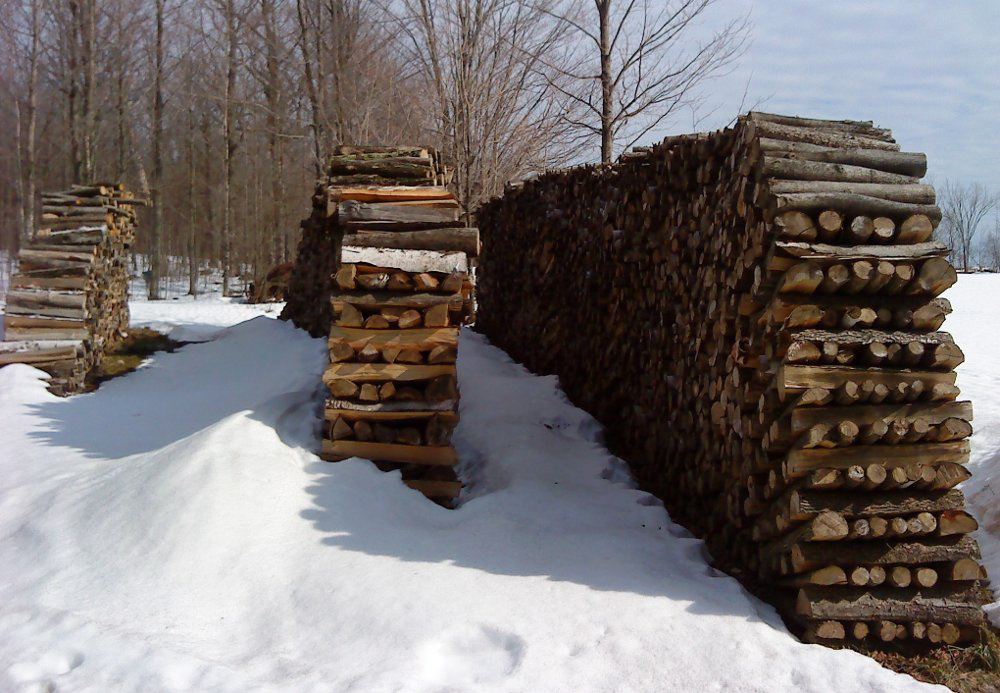2011 Season wrap-up

Share
That’s right we used a lot of wood. The pile above is about 10 feet high. We burned almost 70 cords this year! Thanks to those of you who help move a load or two.
Don’t ask about the carbon foot print this year. Sorry Gaia. We’ll do better. Promise? We’d better. do better.
The reason we burned so much wood (and made so much syrup!) was we added vacuum to a pipeline system that was previously on gravity. The increase in sap was astounding. Vacuum is the conventional method for most production of maple syrup nowadays. Look for a post soon describing how vacuum works in a sugarbush.
better do better.
A reverse osmosis (RO) machine will help. Some say the use of ROs lessens the flavor of the syrup.
An RO is essentially a filter. It filters water into one container and concentrated sap into a second container. Traditionally, osmosis machines are used to produce pure water from salt water or other contaminated water sources. Because sugarmakers seek the impure byproduct of the machine instead of the pure water, the process in the maple industry is called reverse osmosis.
Sap is typically 2-2.5% sugar. It takes approximately 40 gallons of sap to arrive at one gallon of syrup. An RO can take sap to 15% sugar concentrate with one pass through the machine. A second passing of the sap through the membrain could increase the sugar content to almost 25% sugar.
Because of the fear of diminishing the excellent flavor of our syrup, we plan to run our machine (once we get one!) no higher than 8%. This will still allow the sap to boil over that raging wood fire for a decent amount of time allowing the syrup color to darken a touch and continue to create that excellent maple flavor Green Wind Farm syrup is known for.
Even this should cut our wood consumption by almost 75%. Incredible time, resource, and consumption savings. I told you we’d be better to you Mother Earth.

